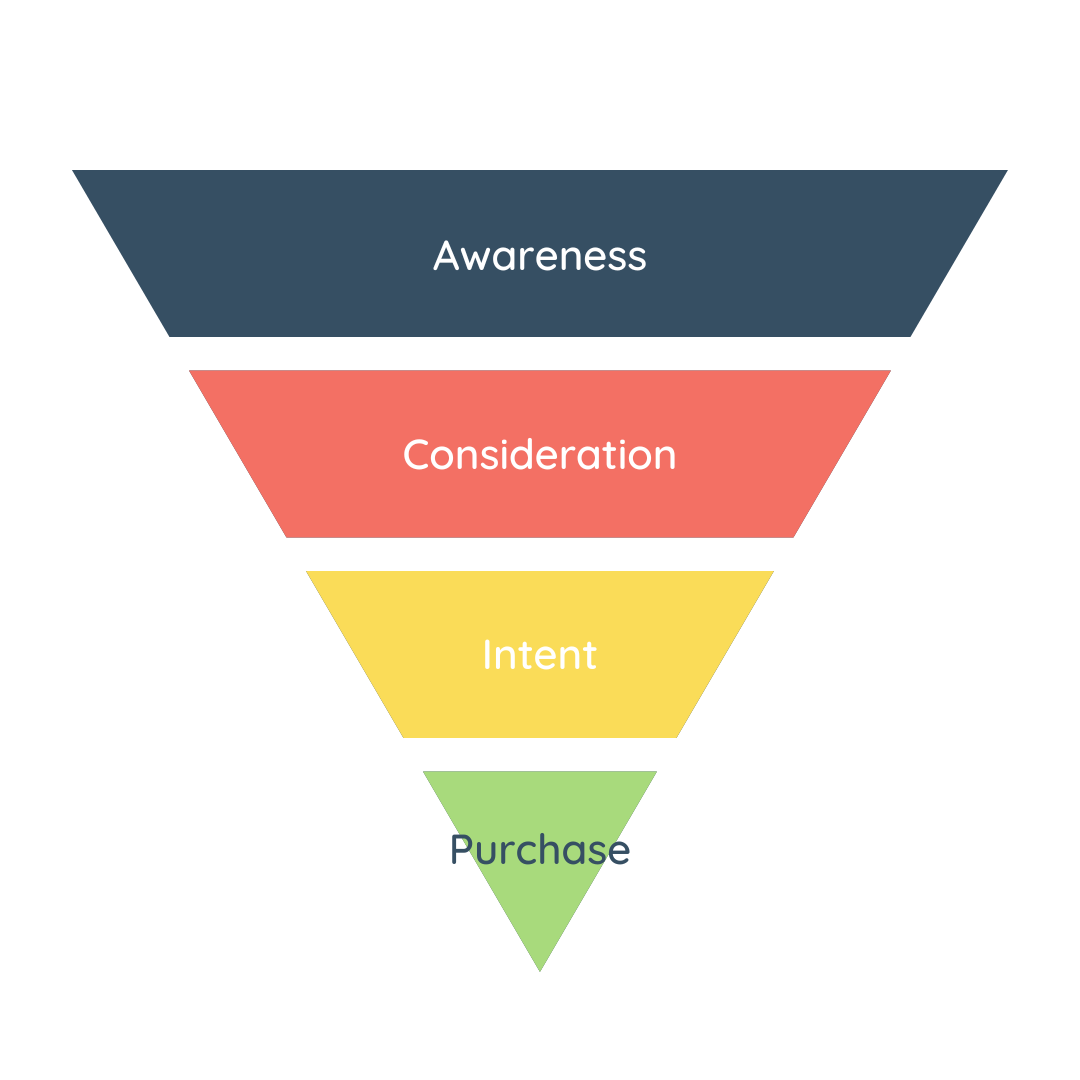Funnel analytics help marketers measure key conversion points along the consumer path to purchase. While the industry widely recognizes a consumer’s journey may not be always linear, the funnel is a helpful tool to understand critical pain points along the path to purchase. Some consumers move faster or slower than others in their purchase considerations, some skip periods in the funnel entirely. Regardless of how a consumer makes their way to a purchase, the funnel is a helpful framework to ensure marketers are analyzing each critical step along the way.
If using a holistic marketing mix model, full-funnel analysis aggregates a variety of metrics such as website visits, social media engagement, TV advertising, and more. This may highlight critical points where consumers fall out of the purchase cycle and identify areas to improve consumer behavior. Once these areas have been identified marketers can optimize the media mix or implement campaigns to address any issues.
Map the Path to Purchase
To analyze the purchase funnel, businesses must map typical consumer journeys from an unaware prospect all the way to a repeat consumer. Once the consumer journey has been mapped, identify key performance indicators (KPIs) that define a successful conversion from one consumer state to another. A website visit, for instance, may indicate a consumer has gone from being aware of the brand to considering a purchase. An add-to-cart action shows a further conversion to purchase intent, and then finally the purchase. When creating these KPIs, be sure to assign the highest value to critical points of conversion. If a product is only sold at brick-and-mortar retail locations, website visits might be less of a priority to ad recall. If a product requires trying on prior to purchase, maybe store traffic is just as important as website traffic. Once the proper points of conversion have been identified, a model (or series of models) can be developed.
One of the most common and useful funnel analyses accounts for brand awareness over time and how the building of awareness feeds the base conversions of a brand. Strong brands rely on more than marketing to drive conversions, they rely on branding that has been built over months and years. Analyzing just the incrementality of current media in the market fails to properly credit the ongoing brand-building that media is doing over a long period of time. The best marketing not only drives sales now, but builds the brand for ongoing future sales and easier conversions.
Continuous Tracking
Once the analysis is complete, it is important to continuously monitor the impacts of optimization efforts. As areas are identified for improvement, regularly check how consumers respond to these efforts. This can be done both by updating the modeling and with additional KPIs. KPIs are ways for brands to check the pulse of success between larger analysis. Are bounce rates going down thanks to the content refresh? Are branded searches increasing thanks to the updated TV reach and frequency shift? These can be indicators that the overall funnel health is improving.
As performance increases, continue to refit the model, monitor KPIs, and update the funnel when needed. Consumer, industry, and brand needs and behaviors change so it is important to occasionally revisit the overall architecture. As new purchase channels are introduced, consumer tastes change, or the brand evolves, be sure to include those changes in the modeling. A well-structured, full-funnel analysis ensures a brand is meeting the needs of their consumers and efficiently moving them through the path to purchase.
